I get how frustrating it feels when your finger locks, clicks, or gets stuck every time you try to move it. Living with that kind of pain can make even simple tasks harder than they should be.
The good news is you’re not stuck with it. With the right physical exercises for trigger finger, you can loosen your finger, ease the discomfort, and regain more control.
In this post, I’ll share what I’ve found most helpful: simple stretches, strengthening moves, a daily plan, and the warning signs you need to watch for.
If you’re ready to finally give your hand some relief, everything you need to start improving is right here.
Understanding Trigger Finger
Trigger finger happens when one of your fingers gets stuck in a bent position and then suddenly pops straight. You may experience stiffness, locking, or a clicking sensation when attempting to move it.
Sometimes, the finger may stay bent and won’t straighten without help. This condition is caused by swelling or thickening of the tendon sheath, which prevents the tendon from gliding smoothly.
Inflammation, repeated gripping, or health issues like diabetes can increase your risk. It often affects the thumb, ring, or middle finger.
Is It Safe to Exercise with Trigger Finger?
Yes, gentle exercise is usually safe for trigger finger, especially in early or mild cases.
You can start stretching and movement exercises as soon as you notice stiffness, but stop right away if you feel sharp pain or your finger locks up.
People with severe pain, swelling, or other health issues like diabetes or arthritis should talk to a doctor before beginning any exercises.
A healthcare provider can help you avoid further damage and may suggest a tailored treatment plan if needed.
Trigger Finger Physical Exercises: Relieve Pain and Regain Movement
Dealing with trigger finger can make even simple tasks feel tough, but the right exercises can ease the pain and bring back smoother movement.
Here’s a set of exercises you can try to help your fingers feel stronger and more flexible again:
1. Finger Extension Stretch

Place your hand flat on a table, palm down. One by one, gently lift each finger off the surface. Focus on slow, pain-free movement.
Hold each finger for a few seconds before lowering. This stretch helps reduce stiffness and improve mobility. Try repeating this 8–10 times on each hand, especially in the morning or after periods of inactivity.
2. Passive Finger Lift
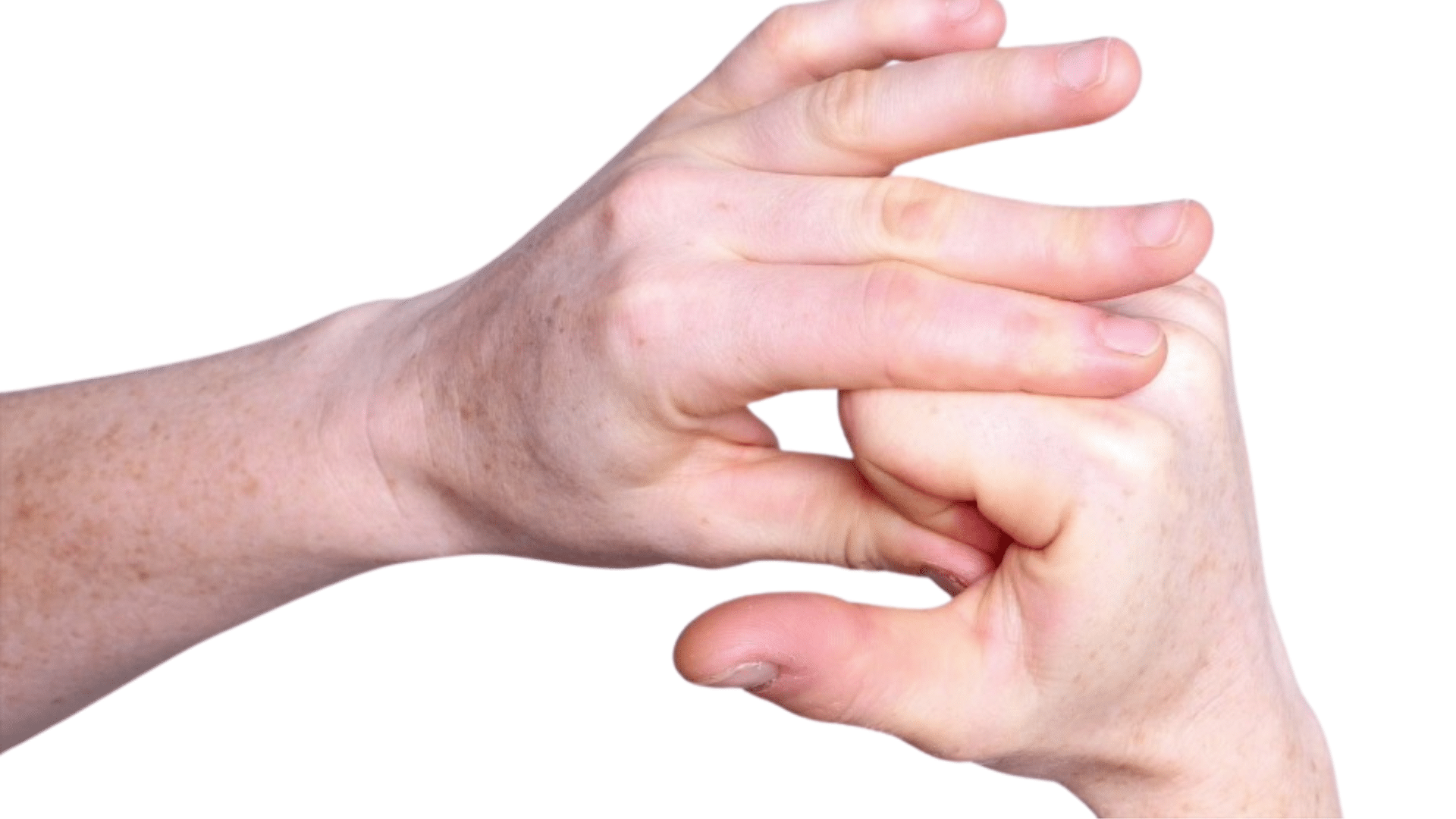
Use your opposite hand to gently lift the affected finger. Don’t force it, just guide it upward until you feel a gentle stretch.
Hold for about 5 seconds, then relax. This helps improve tendon movement and reduce locking. Do this a few times throughout the day, especially after periods of stillness or when pain starts to build.
3. Stress Ball Squeeze
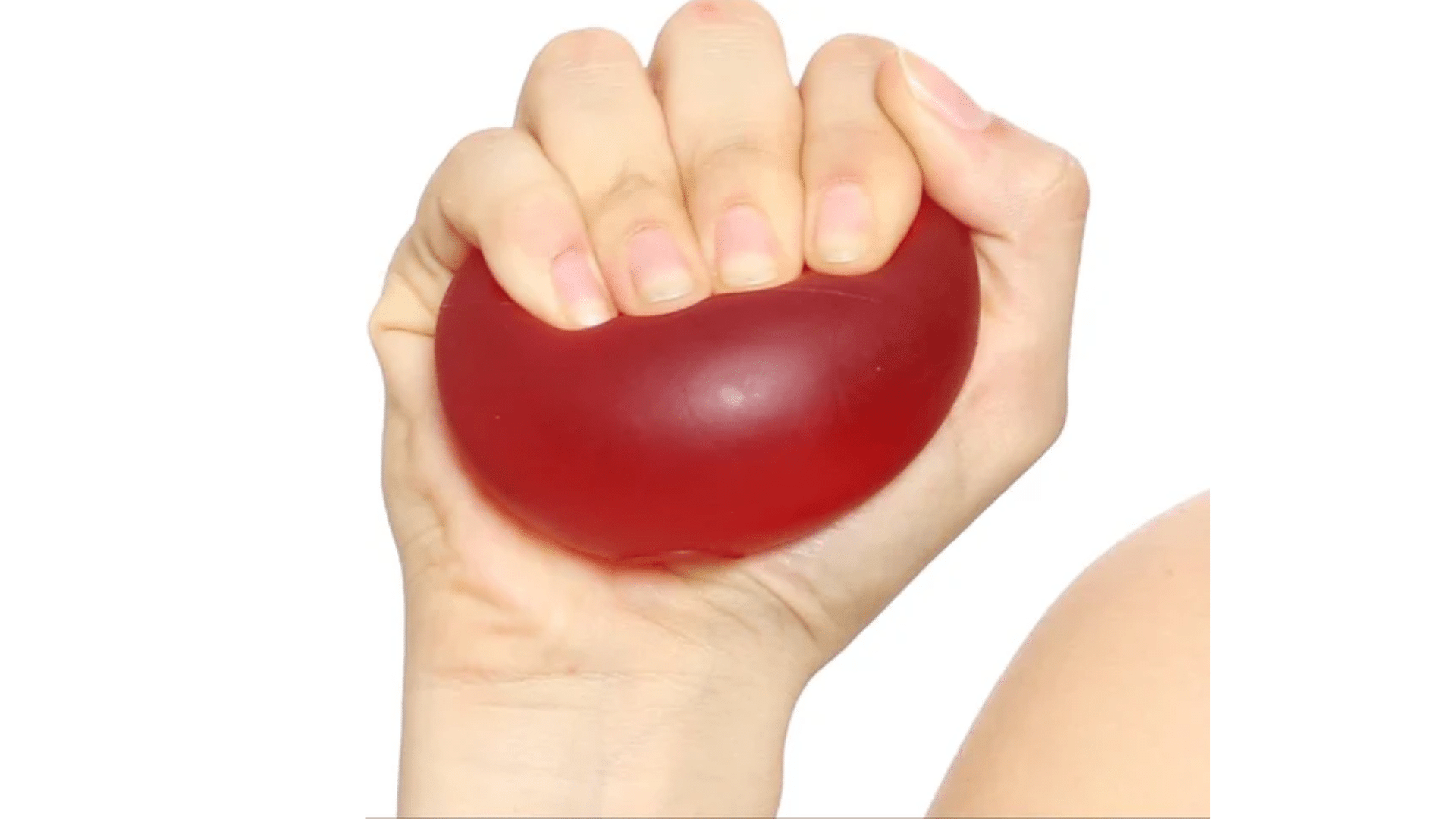
Hold a soft stress ball in your hand and squeeze gently. Hold the squeeze for about 5 seconds, then release.
Repeat 10 to 15 times. This exercise helps strengthen the muscles and tendons in your hand and fingers. Make sure the ball isn’t too firm; comfort matters more than resistance in the early stages.
4. Rubber Band Finger Spread
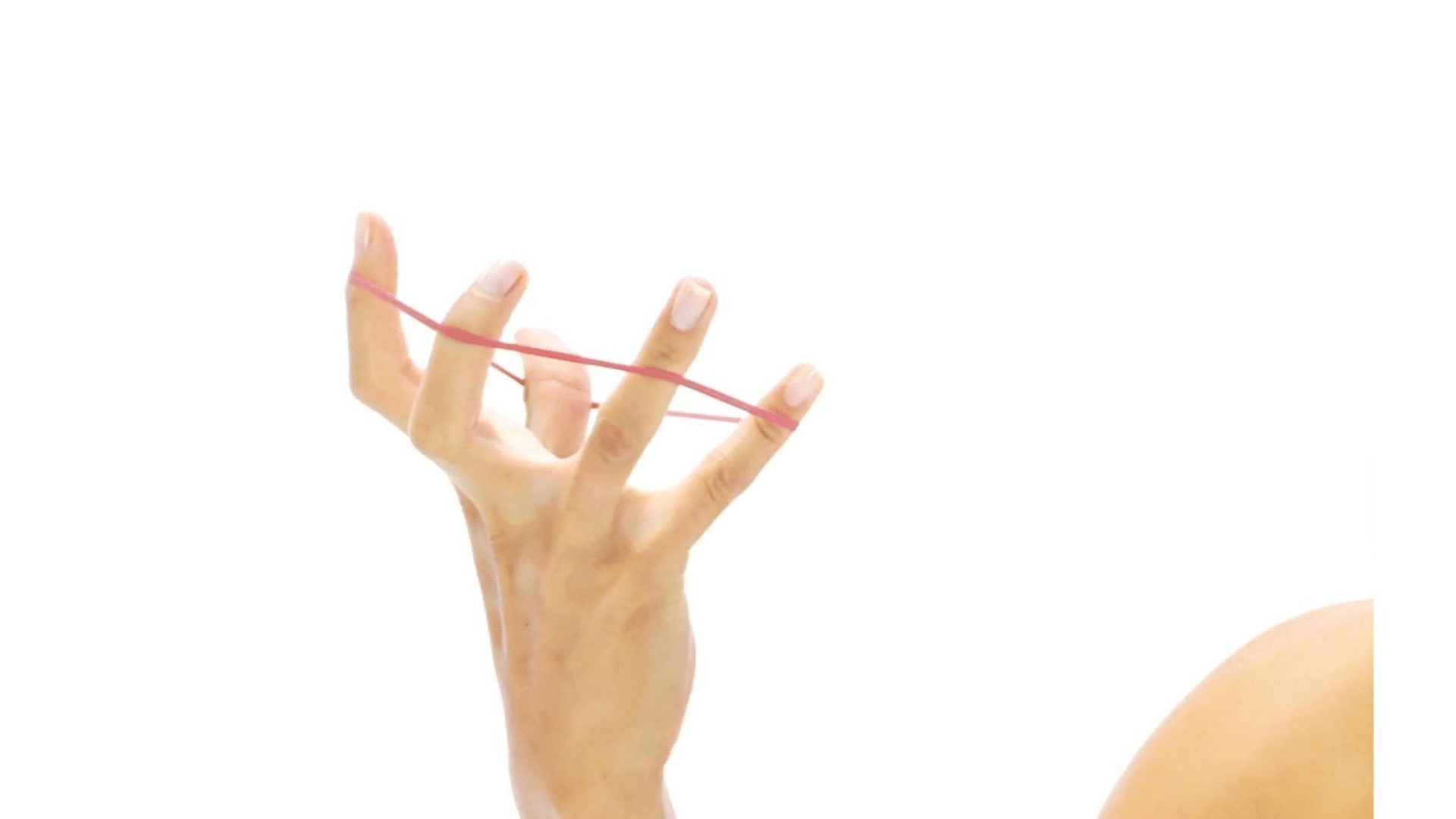
Place a rubber band around your fingers and thumb. Slowly stretch your fingers outward against the band’s resistance, then bring them back. This builds strength in the finger extensors and helps improve the range of motion.
Start with 1–2 sets of 10 reps, and only increase resistance once you can do it pain-free.
5. Thumb Pull Back

Place your hand flat on a table. Use your other hand to gently pull your thumb back until you feel a stretch.
Hold for 5–10 seconds, then relax. This targets the thumb tendons and improves flexibility. Repeat 5–10 times, focusing on slow and controlled movement without pushing through pain.
6. Gentle Fist

Make a loose fist without squeezing tightly. Hold it for a few seconds, then slowly open your hand and spread your fingers as wide as you can.
Repeat several times. This helps maintain joint mobility and prevent stiffness. Avoid clenching too hard, as that can irritate the tendon further.
7. Fingertip Taps
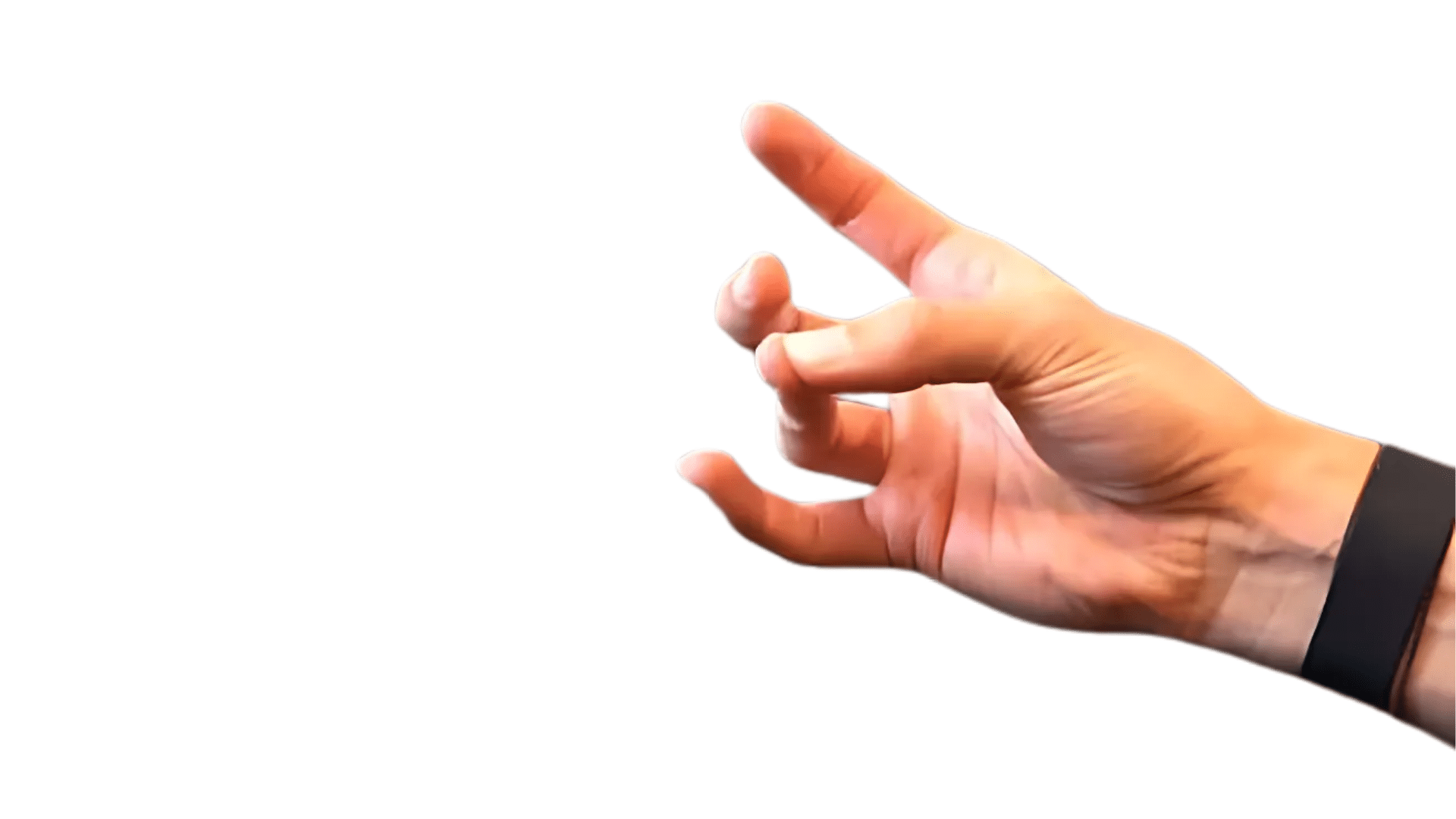
Tap your thumb to each fingertip one at a time, moving slowly and precisely. This keeps the finger joints moving and improves coordination.
Repeat the sequence several times per hand. It’s a simple movement but effective when done regularly throughout the day, especially when your fingers start to feel tight.
8. Paper Pinch

Hold a small piece of paper between your thumb and one finger. Squeeze gently and try pulling slightly to create light resistance.
Hold for 5 seconds before releasing. This strengthens pinch grip and tendon function. Repeat this a few times with different fingers for balanced hand strength.
9. Finger Slide
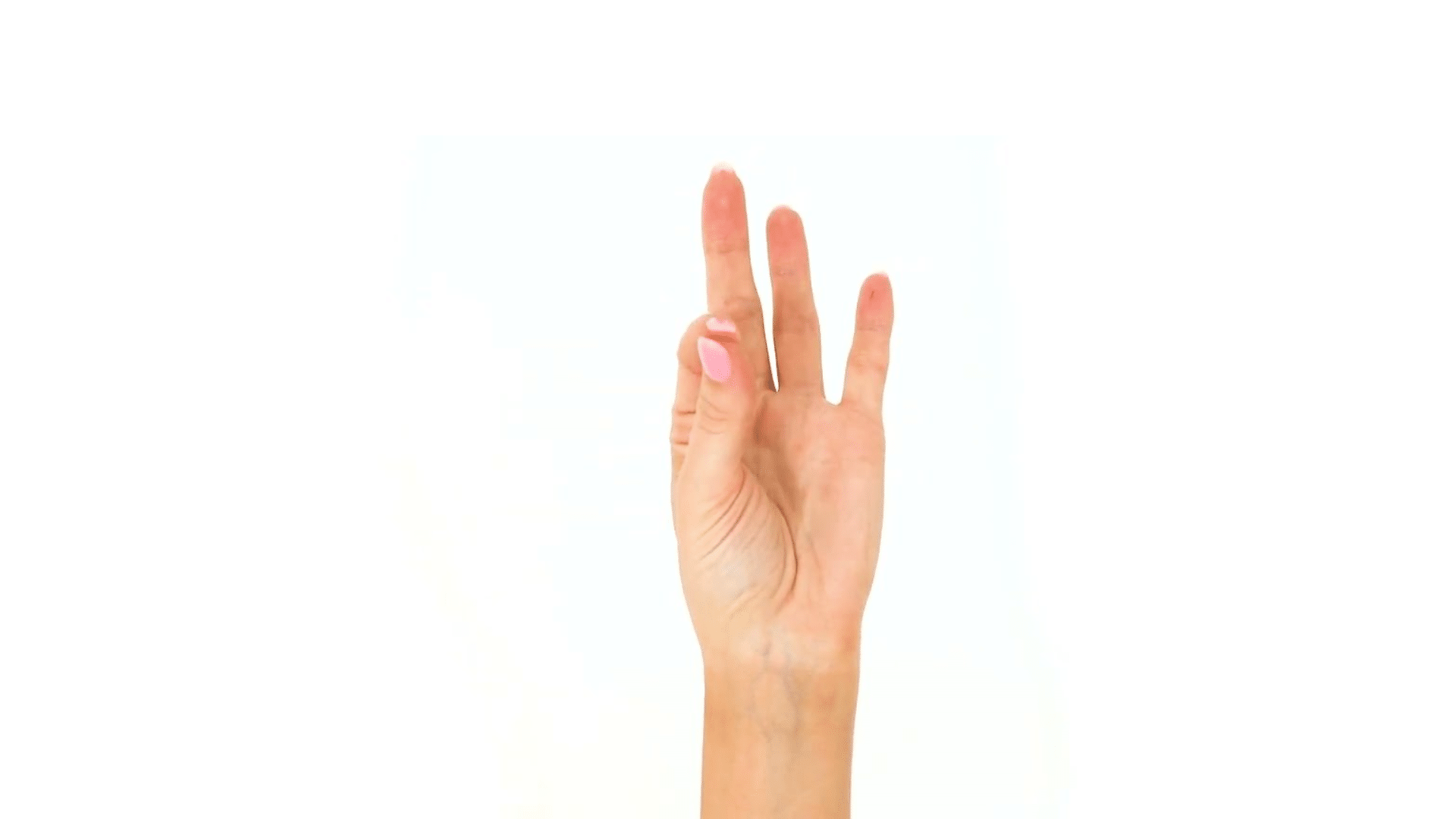
Rest your hand palm-up. Slide your fingertips toward the center of your palm, like starting a fist but stopping halfway.
Hold the shape for a moment, then return. This maintains finger flexibility and helps improve the glide of tendons through their sheaths. Repeat slowly 10–12 times.
10. Wrist Stretch
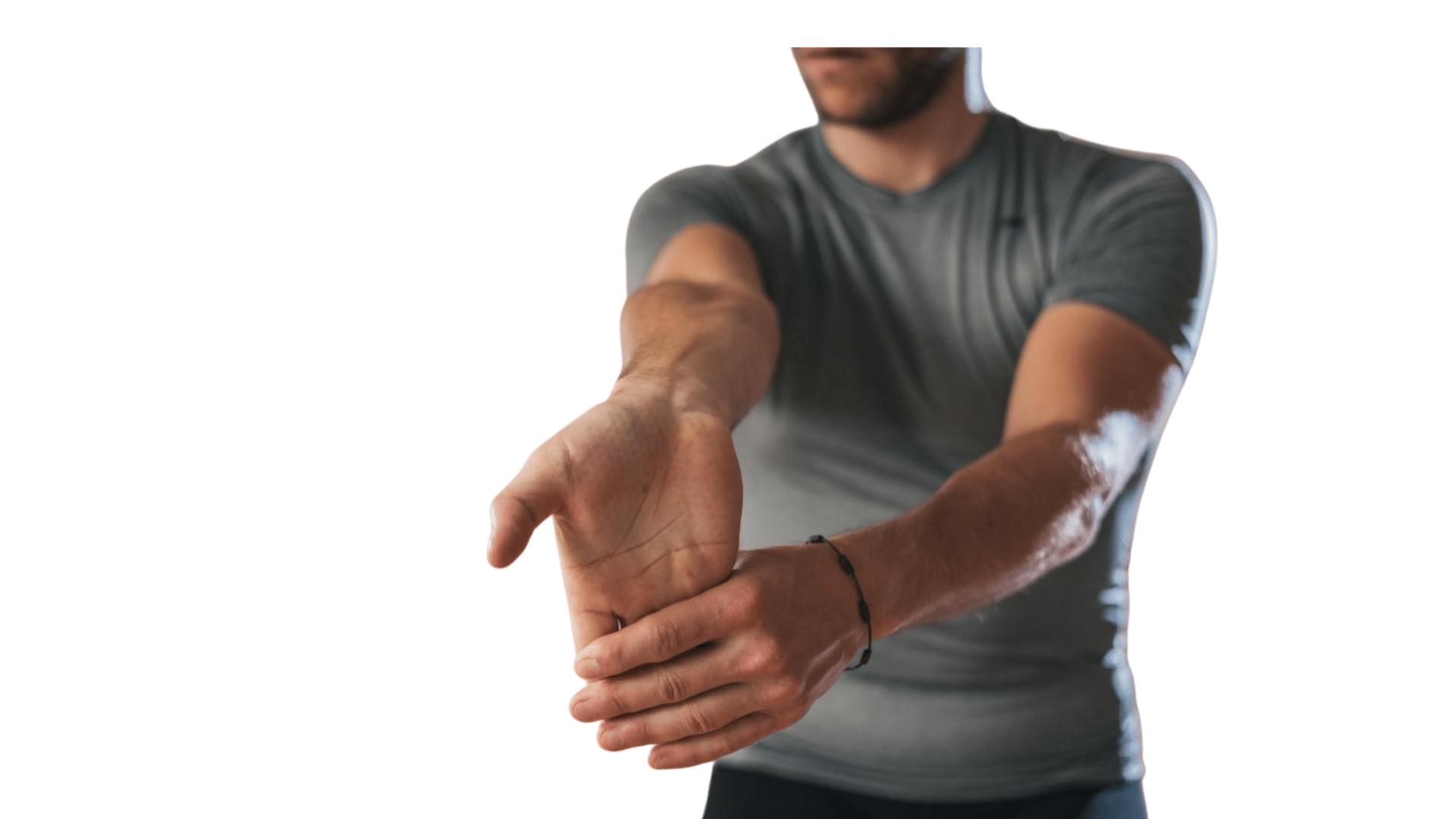
Extend one arm with the palm down. Use your other hand to gently pull the fingers back toward you.
Hold for 10–15 seconds. This stretch helps relieve tension in your wrist and hand tendons. It’s especially helpful when tightness spreads beyond just the fingers. Repeat on both sides if needed.
11. Isometric Press

Place your hand flat on a table. Use your other hand to press one finger down while gently resisting upward.
Hold for 5 seconds, then release. This exercise strengthens the tendon without causing excessive motion. It’s useful if full movement hurts or feels limited.
12. Tabletop Stretch
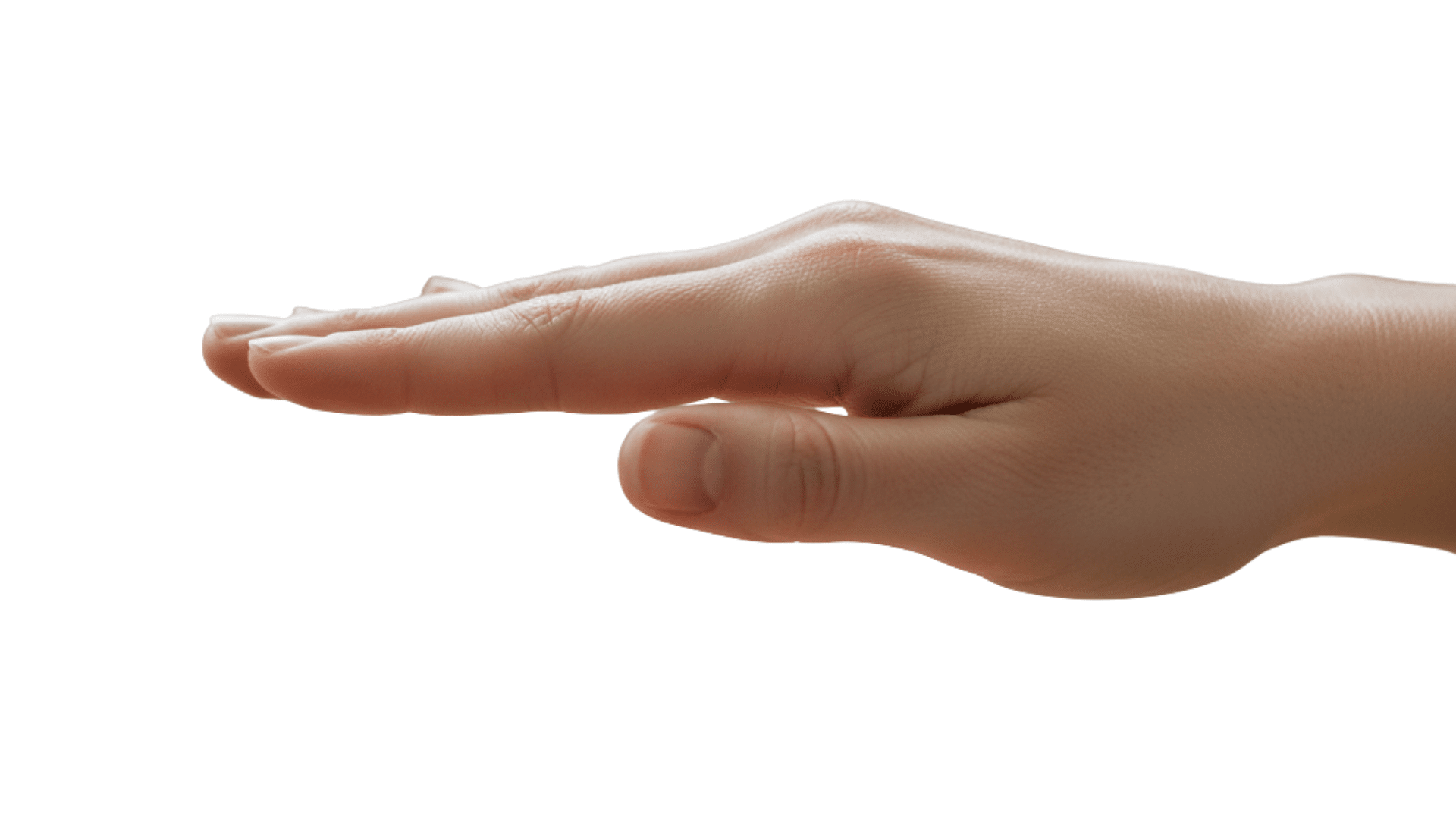
Bend your fingers at the middle and top joints only, keeping the knuckles straight. Your fingers should form a “tabletop” shape.
Hold for a few seconds, then straighten. Repeat several times. This targets specific finger joints and is ideal for improving fine motor control and flexibility.
13. Hand Wave

Lift your hand in the air like you’re waving. Slowly bend at the knuckles and then fully straighten.
Focus on smooth movement with no jerking. Repeat 10–15 times. This simple motion keeps the fingers active and flexible, especially after long periods of rest.
14. Side-to-Side Finger Wiggle
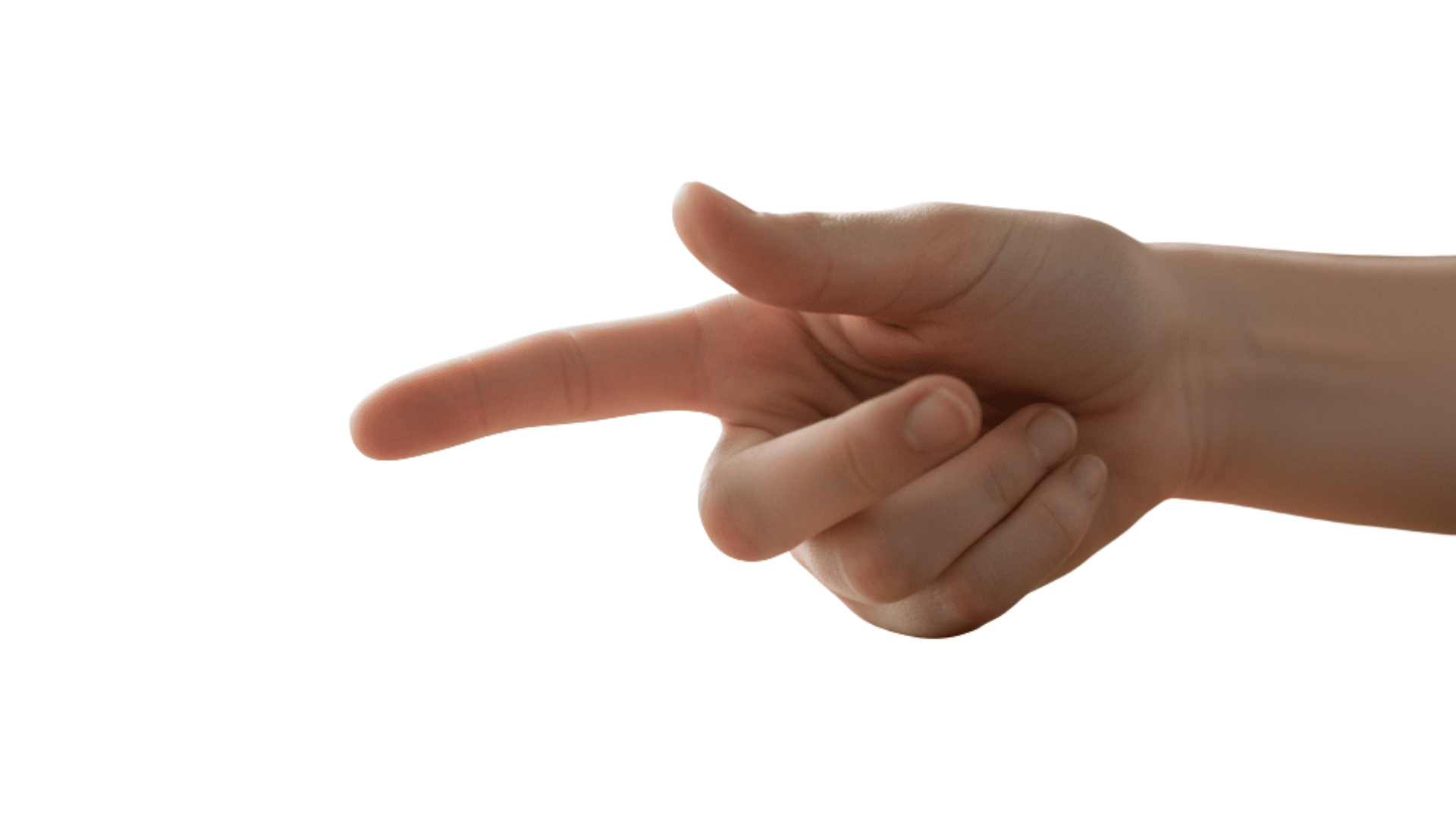
Gently move your affected finger from side to side. Keep the rest of your hand stable. This lateral movement helps loosen stiff tendons and increases joint comfort.
Start slow and only move as far as feels comfortable. Do it a few times daily.
15. Palm Press
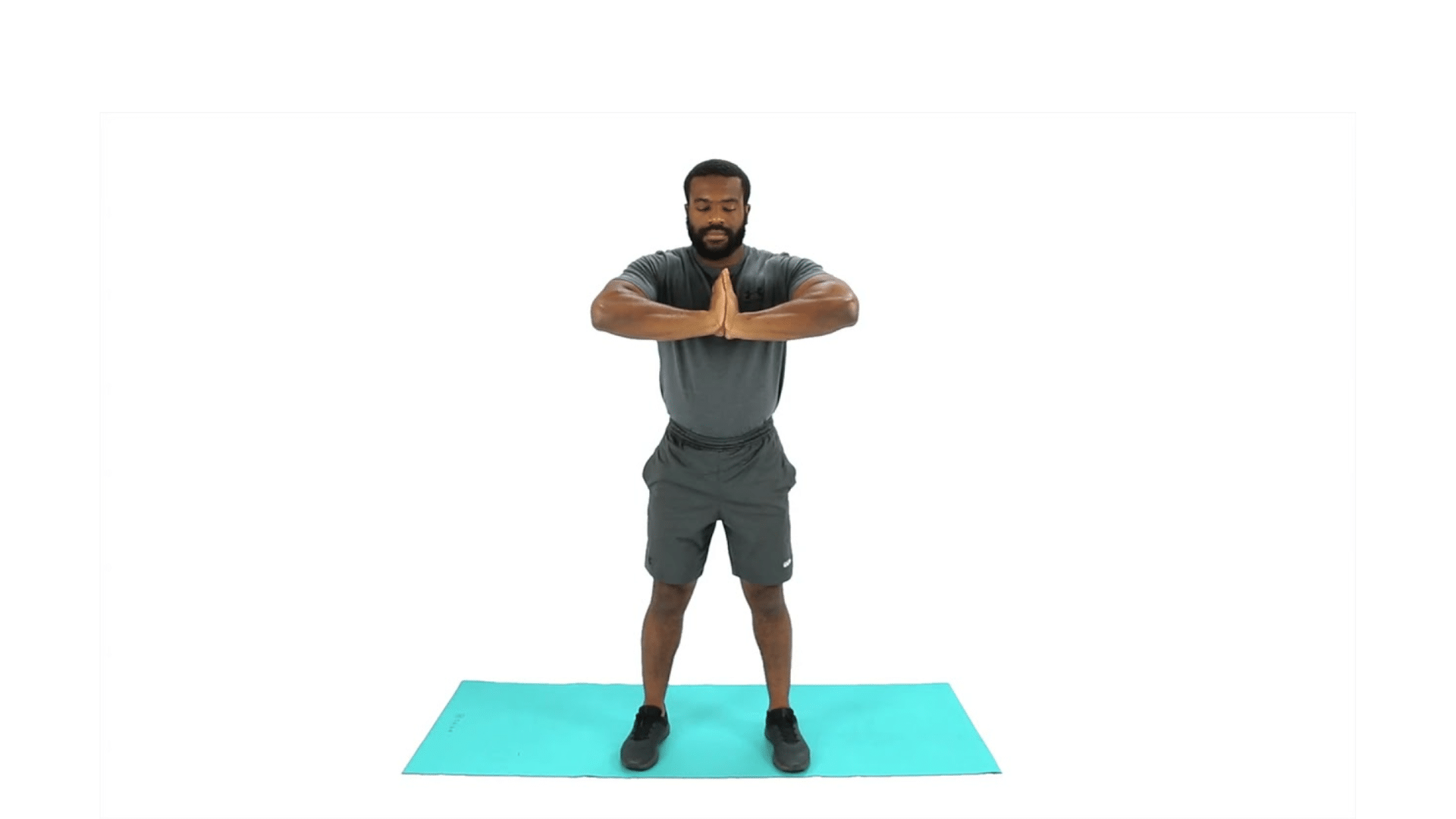
Press your palms together in front of your chest like a prayer. Apply gentle pressure and hold for 10 seconds. This movement stretches the fingers, palms, and wrists all at once.
It’s a good finishing move after completing other exercises.
Trigger Thumb Exercises You Can Try
If your thumb feels stiff or locks up from trigger thumb, a few easy exercises can make a real difference. These moves are simple, and you can do them at home without any special tools:
- Thumb Opposition Slide: Slowly touch your thumb to each fingertip, then slide across your palm.
- Thumb Tendon Glides: Bend your thumb toward your pinky, then straighten it slowly.
- Isometric Thumb Press: Press your thumb into your index finger while resisting slightly. Hold and release.
- Resisted Thumb Lift: Place your hand palm-up. Use a finger to gently resist the thumb as you lift it.
Do each movement 5–10 times gently, and stop if you feel pain. Doing these exercises regularly can help ease pain, improve movement, and reduce the frequency of your thumb locking.
Stick with them, and you’ll likely notice your thumb feeling more flexible and stronger over time.
Sample Daily Rehab Plan for Trigger Finger
To make recovery easier, it helps to have a simple plan you can follow each day. Here’s a sample daily rehab plan that gives structure and balance to your exercises:
| Time of Day | Exercise | Reps/Sets | Notes |
|---|---|---|---|
| Morning | Finger Extension Stretch | 10 reps per finger | Helps reduce stiffness after sleep |
| Morning | Gentle Fist | 10 reps | Opens and closes the hand gently |
| Midday | Rubber Band Finger Spread | 2 sets of 10 | Builds resistance and range of motion |
| Midday | Thumb Pull Back | 5–10 reps | Improves thumb flexibility |
| Afternoon | Stress Ball Squeeze | 2 sets of 10 | Strengthens grip without strain |
| Evening | Tabletop Stretch | 10 reps | Keeps finger joints flexible |
| Evening | Self-Massage (hand, wrist, forearm) | 3–5 minutes | Boosts circulation and relieves tension |
| Before Bed | Side-to-Side Finger Wiggle | 10 reps | Reduces nighttime locking or stiffness |
| Before Bed | Wrist Stretch | 3 holds of 10–15 seconds | Loosens surrounding tendons |
This plan is just a guide; you can adjust it based on your comfort level and progress. Stay consistent, listen to your body, and you’ll give yourself the best chance for steady recovery.
Exercises to Avoid With Trigger Finger
Certain movements can make your symptoms worse. It’s important to protect your hand and avoid further irritation.
Skip any exercises that involve:
- Tight gripping
- Fast, jerky motions
- Heavy resistance or weight
These actions put pressure on the tendon, which can lead to more pain, swelling, or even locking.
Also, stop any movement that causes a sharp pain or makes your finger catch or stick. Using your hand too much without rest can slow healing and make inflammation worse.
When to Stop and Rest
If your finger starts to:
- Lock in place
- Swell
- Feel hot or tender
…it’s time to stop and rest.
Rest is just as important as exercise. If the pain gets worse during or after your workout, that’s a sign your hand needs a break. Pushing through can lead to long-term problems.
Take frequent breaks and don’t rush the healing process. Recovery happens when you balance movement with rest.
How to Modify Your Routine for Severe Pain
If you’re dealing with strong pain, don’t force regular exercises. Make simple changes to avoid strain:
- Move more slowly and more gently
- Lower the number of reps and resistance
- Keep your finger’s range of motion small
Try using a warm compress to help loosen the tendon before starting. Focus on light stretches and soft massage instead of strength training.
Stick to short sessions with easy, pain-free movements. This helps maintain flexibility without causing more irritation.
When to See a Professional for Trigger Finger
If your trigger finger isn’t getting better after a few weeks of gentle stretching or rest, it’s a good idea to check in with a doctor.
Also, make an appointment if:
- Your finger gets stuck in a bent position
- It starts to swell or hurt more
- You have trouble moving it at all
If you have other health issues, like diabetes or arthritis, you might need a more tailored treatment plan.
A doctor can recommend options such as wearing a splint, receiving a steroid injection, or starting hand therapy.
For more serious cases, surgery might be the best fix. Don’t wait too long—early treatment can help you avoid long-term stiffness or tendon damage.
Conclusion
If you’ve read this far, I hope these trigger finger physical exercises gave you a clear and simple way to start easing your pain.
From what I’ve learned, even small, steady movements can bring big changes when they’re done with care.
You don’t need to push through sharp pain or try random fixes; you just need the right steps and patience.
Stick to the exercises that feel safe, give your hand time to heal, and don’t wait to reach out for medical help if things aren’t improving.
Recovery works best when you stay consistent and gentle with yourself. If this guide helped you, take the next step and check out my other blogs for more easy, practical tips to support your health!





